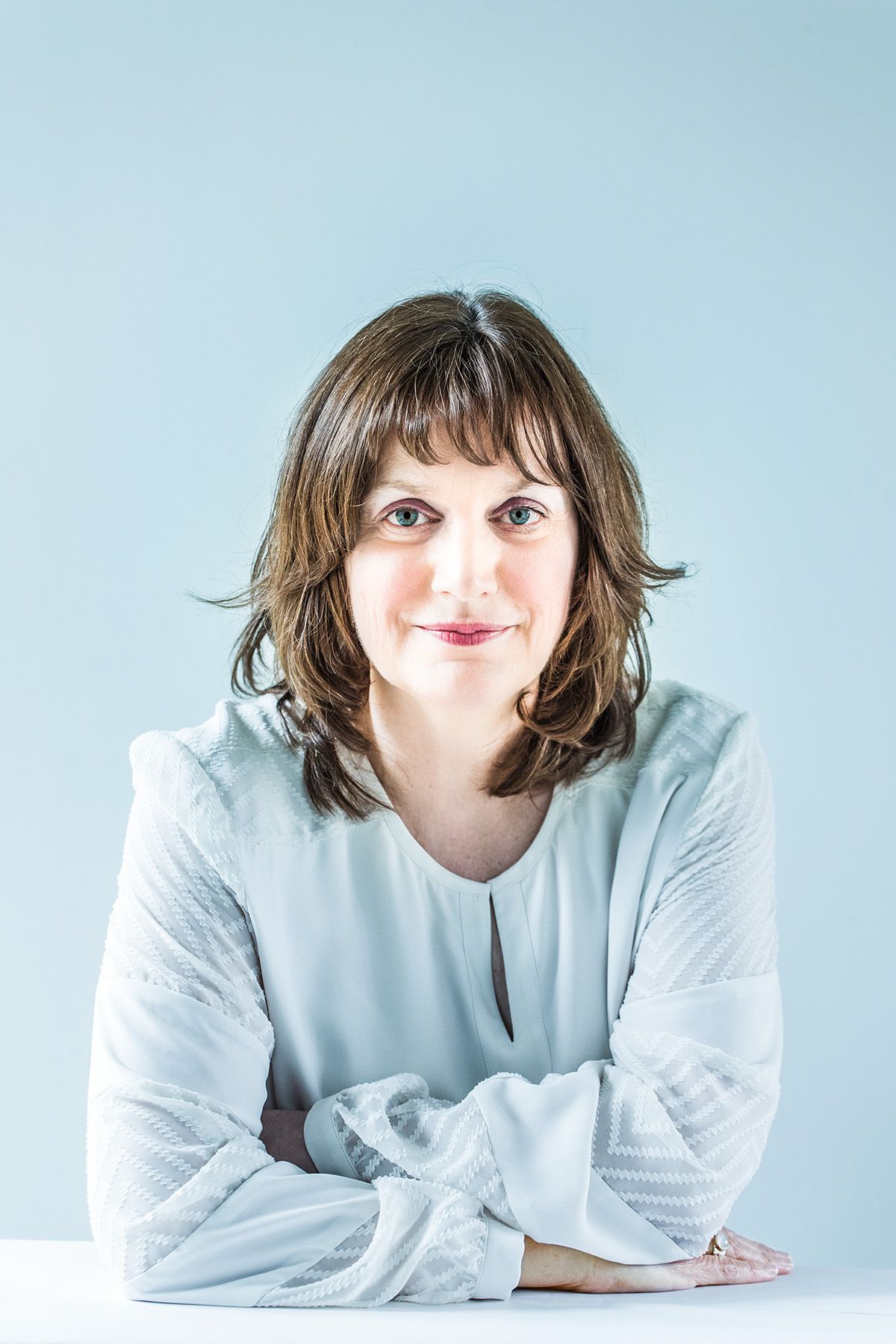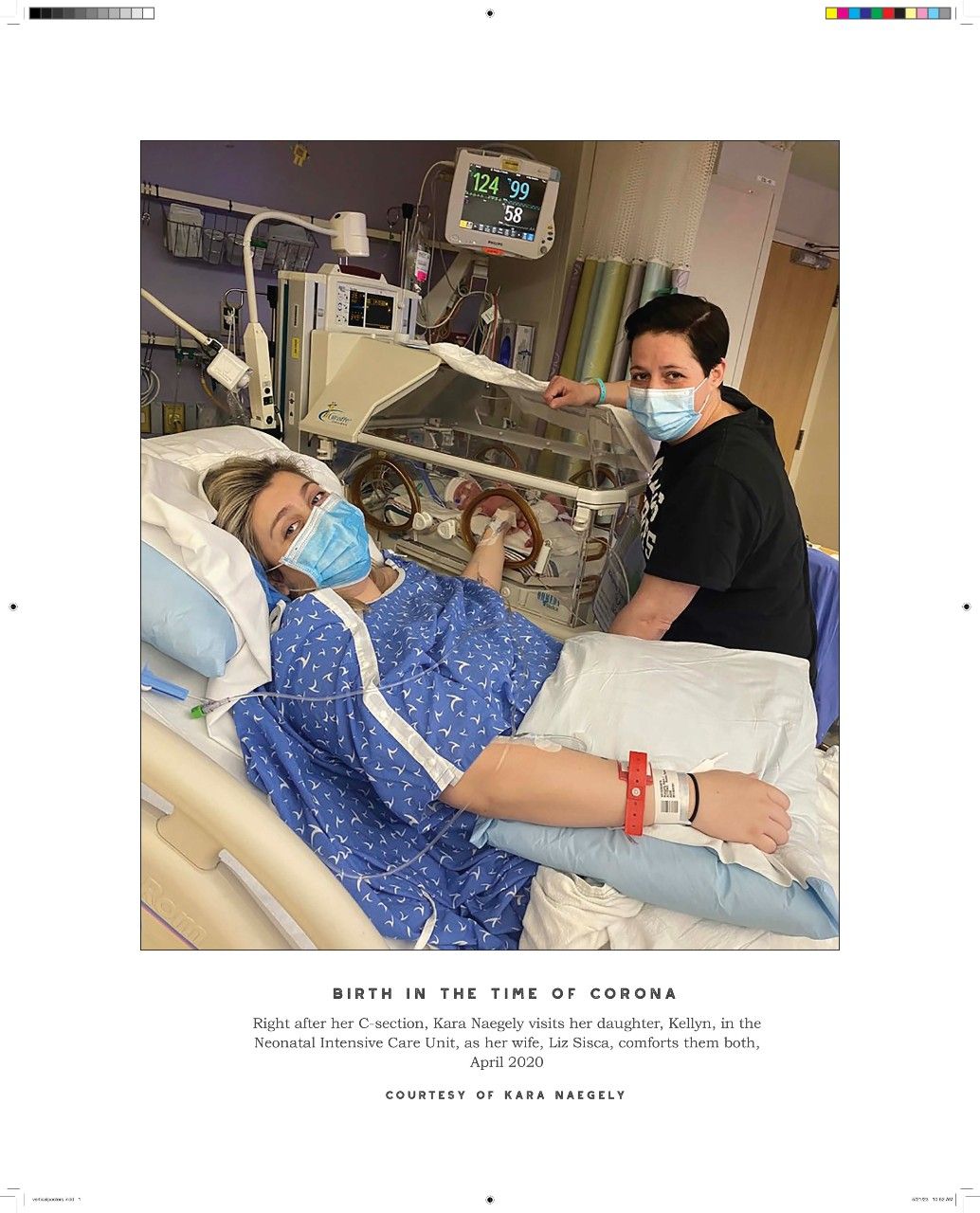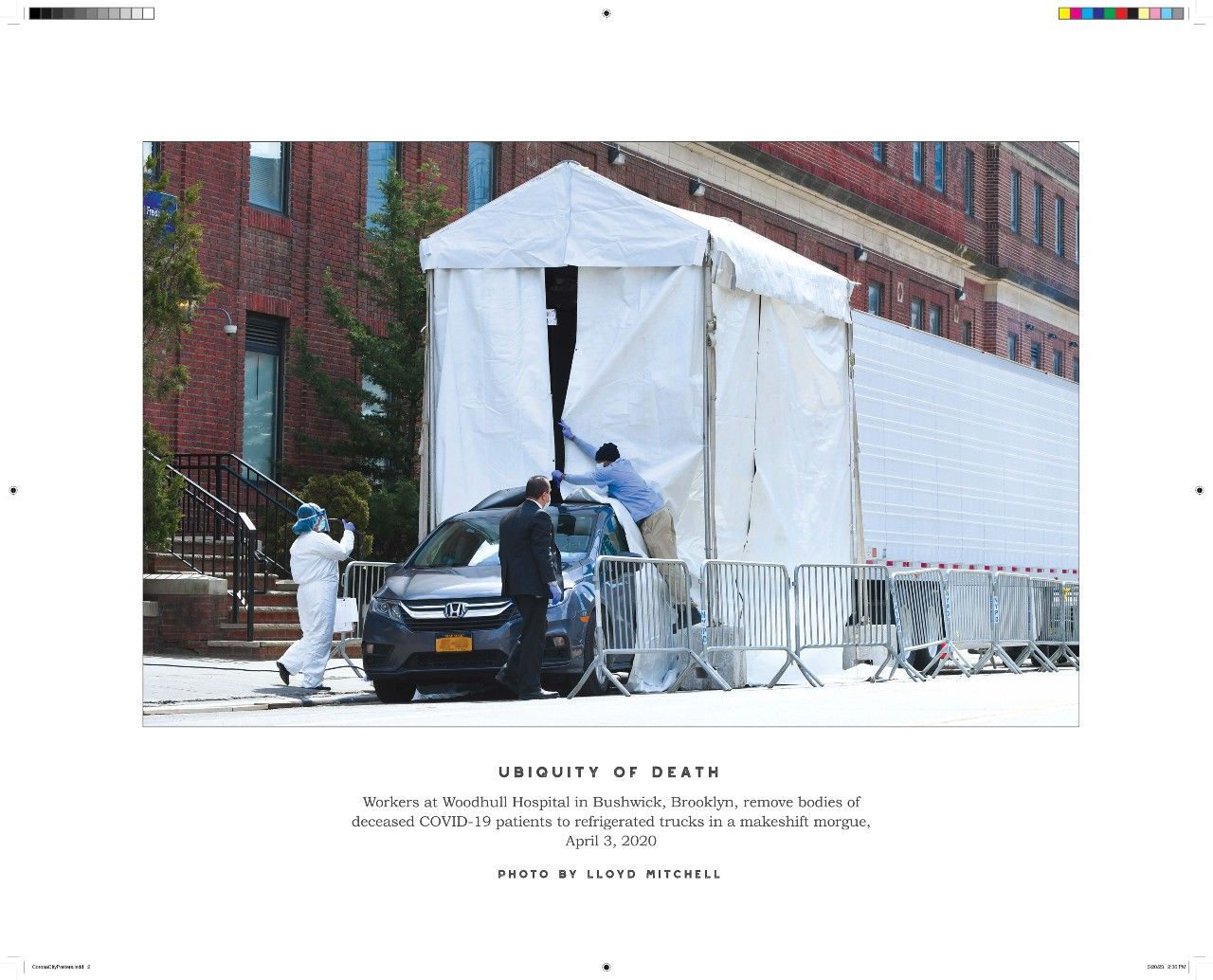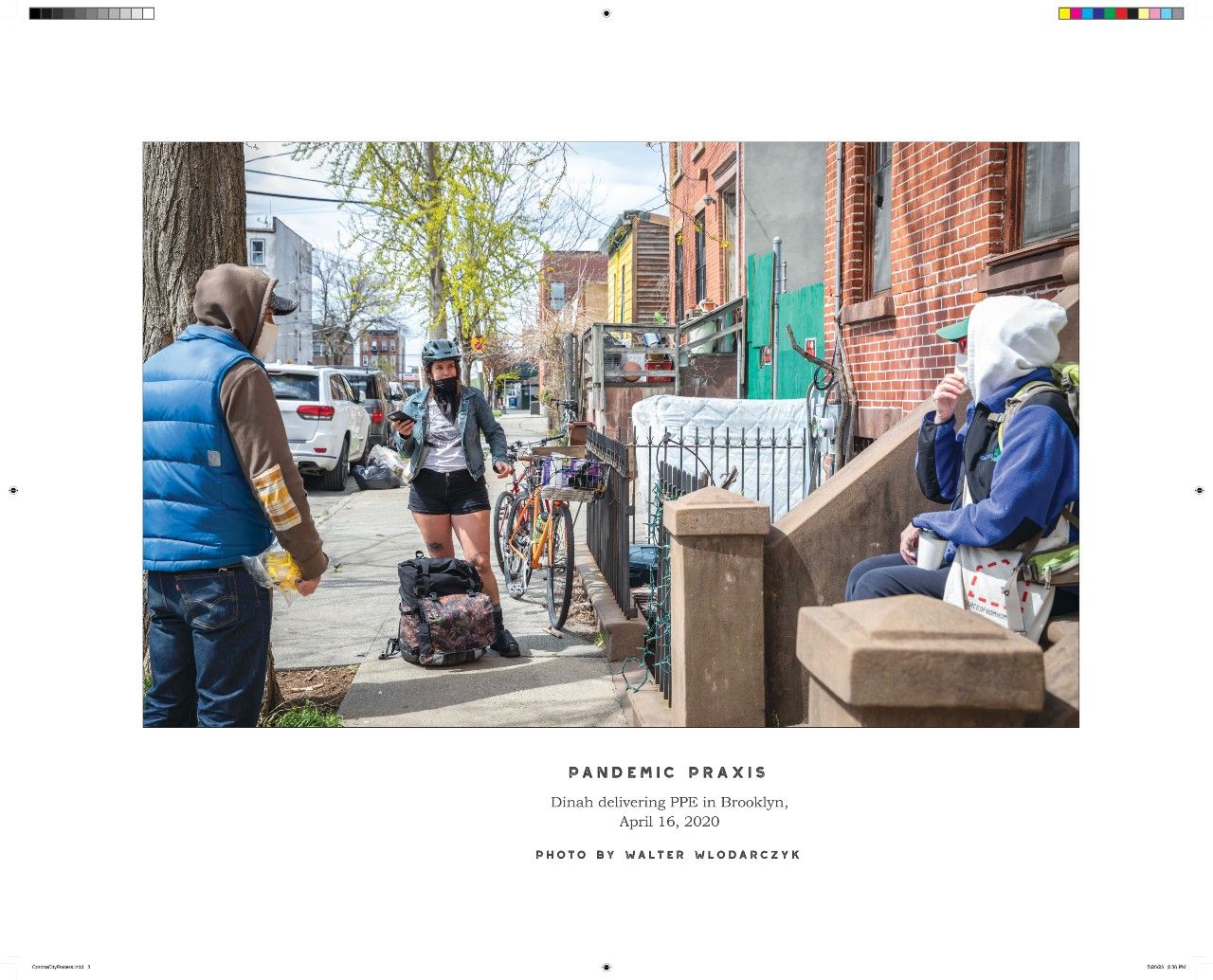Voices of Resilience: Q&A With the Editor of "Corona City: Voices From an Epicenter"
Step into the diverse and poignant world of "Corona City: Voices From an Epicenter" with editor Lorraine Ash, MA. In this insightful Q&A, learn about the origins of this remarkable anthology, the challenges faced in capturing raw, unfiltered narratives of the COVID-19 pandemic, and the lasting impact of these stories on readers and communities alike.
Corona City: Voices from an Epicenter, Lorraine Ash, Editor
(Original photo "Rush Hour" by Matthijs Noome)

The first time I saw the cover of the book, Corona City: Voices From an Epicenter, I was struck by the emptiness of the main concourse of the Grand Central Station in New York. I then found out that the photograph was taken during what normally would have been bustling time with daily commutes.
Matthijs Noome took the striking photograph on March 30, 2020, at the beginning of the COVID-19 pandemic lockdown in one of the largest cities in the world. It and the rest of the stories and photographs in the book epitomize the strength and resilience of the people of New York and New Jersey and, in a very real way, the people of the world.
The entire book took me back to my own pandemic experience and opened my eyes to what others felt as well. It will do the same for you.
To learn more about the project, I asked Lorraine Ash, MA, editor of Corona City, to explain how the project came to be and its lasting impact. She explains also why the proceeds of the books go to fight hunger in America.
Lorraine Ash, MA, editor of Corona City: Voices From an Epicenter
(Photo courtesy of Lorraine Ash, MA.)

ICT: Can you tell us more about your book, Corona City: Voices from an Epicenter?
Lorraine Ash, MA: I can tell you how it originated. I’m a book editor and author coach who teaches writing workshops. In early 2020, when the virus struck New Jersey and New York, the nation’s first epicenter, I found myself in an interesting position.
The Center at Mariandale in Ossining, New York, one of the places I teach, had to shut down, as did most businesses and stores. Mariandale put out a call among its instructors asking for volunteers to lead programs online. So, I created a memoir series called COVID-19 Diaries: Writing in the Age of Pandemic. I learned to use Zoom and capped the number of participants at 35.
The series included some instruction and writing to prompts before opening the virtual floor to anyone willing to read their work aloud. People wrote. And they shared. Their first drafts were riveting. We all saw the commonality of the COVID-19 experience in our writings: isolation, uncertainty, and fear. But we realized, too, that each person’s reality was different.
Kara Naegely visits her daughter, Kellyn, in the neonatal intensive care unit, as her wife, Liz Sisca, comforts them both in April 2020.
(Courtesy of Kara Naegely, printed in Corona City)

In some cases, lovers were separated. Some people had lost their jobs. For others, depression had set in, or anxiety had started arriving in the middle of the night. One woman who lived alone found solace in playing her piano. Another cooked elaborate creative meals. An “out of sorts” atmosphere pervaded all the writings.
A grassroots history is emerging here, I thought. The virus was surely creating a historic time. My journalistic instincts kicked in. This ought to be chronicled.
An anthology seemed a natural choice to tell the COVID-19 narrative because, by definition, a collection of stories is polyphonic. And COVID-19, even in one region, is too big a story to tell in one voice.
Among the 35 original participants was Sherry Wachter, founder of Magic Dog Press and a consummate book designer. “We ought to do a book,” she said. The same thought had occurred to me.
In the very next session, another participant spoke about what his daughter, a nurse, was going through at the hospital where she worked. “The staff has started calling the place Corona City,” he said.
There’s the title of our anthology, I instantly thought. The whole region, despite its differences, had become Corona City.
Appreciation
Nurses wave and clap outside Kings County Hospital in East Flatbush, Brooklyn as the New York Police Department honks and cheers for them during a drive-by salute, April 13, 2020.
(Photo by Lloyd Mitchell published in Corona City.)

The COVID-19 Diaries participants liked the idea of a book. So, we took a first step: I expanded the circle of writers by asking them to invite others they knew to submit writings to me. I did the same in my personal and professional networks. You could say I applied the 6 degrees of separation rule. In no time, I was reading submissions from COVID-19 patients, nurses, and first responders. It was next to impossible to get the attention of doctors at that point. There was even one writing from the head of a church initiative that ministered to people with an addiction and their families; the virus was no friend to those in recovery.
People’s lives were changed. Their problems were exacerbated.
But there was another set of writings from people who felt relief at having to drop their usual daily grind. Some in the latter group were able to relax a little and reflect, some for the first time in their adult lives. Teachers, who found themselves conducting their classes on Zoom from their kitchen tables, were notably not relaxed, however. Neither were parents of young children.
Ubiquity of Death
Workers at Woodhull Hospital in Bushwick, Brooklyn, remove bodies of deceased COVID-19 patients to refrigerated trucks in a makeshift morgue, April 3, 2020.
(Photo by Lloyd Mitchell, published in Corona City.)

As the stories poured in, I started identifying other people, cold-calling them, and inviting them to submit a first-person piece of writing. I collected personal essays, micro-memoirs, prose poems, journal entries, and even a piece written in the form of nurse’s notes.
“We’ll need images, too,” Sherry said. “Can you find some photographers?”
From my former life as a journalist, I knew a lot of news photographers, but only a couple answered my call. I found more, however, as other people suggested photographers they knew. In the end, I linked up with 18 photographers, all walking the eerily empty landscapes that COVID-19 created in the city and suburbs of New York and in New Jersey from Bergen County down to Burlington County.
Ultimately, I was flooded with a rich selection of writings and images. Then the sifting and editing began. Since Sherry and I had already decided to create a full-color book—an 8½” x 8½” coffee table book—I had to choose only 62 of the almost 400 writings I’d received. Color printing is expensive, so the longer the book, the higher its cost. If the price were too high, no one would buy it, not even as a holiday gift. We had to strike just the right balance between color, length, and cost.
Finally, while we wanted a book that bore witness to an unprecedented time, Sherry and I also wanted it to do some other type of tangible good in the world. Hunger was rampant in the New York Metro Area after COVID-19 hit. Even middle-class families were driving to food giveaways at area hotels to pick up bags of free groceries; in some cases, their cars were lined up on the highways as long as the eye could see—a modern version of the bread lines of the Great Depression in the 1930s. The nonprofit Feeding America projected that 54 million Americans would go hungry in 2020.
So, Sherry and I decided that 100 percent of the book’s royalties would go to hunger relief.
ICT: You said 100 percent. How is that possible?
LA: The 150 people ultimately involved in creating Corona City in all its formats are volunteers, starting with Sherry and me, who have now been working on the project for 4 years. Volunteers covered all the proverbial bases, including Lloyd Jassin, my intellectual property lawyer; Walker Vreeland, our audiobook producer; and Margie Lenhart, our audiobook casting director.
The same can be said for the writers, the photographers, and the audiobook narrators, who each worked for one dollar.
ICT: Is the book still donating 100% for hunger relief?
Dinah Gumns delivering PPE in Brooklyn, April 16, 2020.
(Photo by Walter Wlodarczyk, printed in Corona City.)

LA: Yes. Frankly, 2024 also looks like it will be a bad year for hunger. Pandemic nutrition benefits, which fed millions of Americans, have expired. Last fall, Salon reported that food pantries and soup kitchens would help pick up the slack. The only trouble with that plan is that the people who usually donate to food banks are giving less. Why? Because the cost of their own groceries and food is so high.
The cycle is vicious. Corona City is just one book, one effort, and we are doing our part. Hopefully, our high-profile example will help highlight this persistent, significant problem and encourage others to be part of the solution, too.
ICT: How did you select the diverse voices and perspectives featured in the anthology?
LA: I wanted to represent as many different types of experiences and people as I could. For instance, I wanted people of different ages and walks of life. I also wanted voices from as many different places in the New York/New Jersey Metro Area as I could gather. The latter was simply a matter of geography.
And I very much wanted to take the readers of the anthology as deeply as I could into the medical experience of COVID-19, which is the beating heart of the pandemic. So, the book features the perspectives of EMTs, nurses, doctors, and, importantly, patients with COVID-19.
As I gathered submissions and the death tolls kept rising, I found more pieces about losing a parent, a child, a spouse, a friend, a neighbor. Sadly, the one piece I contributed to the anthology, “Lost and Found and Lost,” was about the loss of a family member.
ICT: As the editor, what motivated you to capture the experiences of everyday citizens during the COVID-19 pandemic?
LA: Back in my days as a full-time journalist, I always felt that no story was completely told unless it presented the impact of anything—a policy, a sickness, an economic shift, a weather event, what have you—on average people, individuals, households. In other words, the citizenry.
It’s great to hear from pundits and experts, professors, and observers. They bring informed, big-picture perspectives. But I always want to know how anything and everything filters down and affects the lives, minds, and hearts of what newspaper editors used to call “real people.”
ICT: Which stories in the book surprised you the most?
LA: “Battle Scars” by Ruzha Skoblar, a longtime RN at Hackensack Meridian Health in North Jersey. Her piece gave an inside look at how much hospitals had to adapt to the growing crisis. She described how the staff innovated as the number of COVID-19 patients grew. First, they converted orthopedic units to COVID-19 units. Then they converted surgical stepdown, then oncology. Eventually, even the cafeteria was transformed into a 74-bed COVID-19 unit.
This is an excerpt from her essay:
Nurses became experts at bundling care, using MRI tubing as [an] extension so they could more safely care for their patients without putting themselves at risk. … To prevent central line infections, for instance, we used stat locks and large metal clips to keep IV tubing off the floor. To visualize patients in rooms without windows on doors, we used baby monitors.
We also became experts in proning (placing patients on their belly) and created “prone teams.” There was no complaining, only a feeling of “go with the flow.” I was so proud to be a nurse.
The strength of the human spirit was evident as nurses at bedsides struggled daily to care for patients and their families physically, emotionally, and spiritually. I was particularly touched by the plea of one ICU nurse as she sat outside the room of her ventilator-dependent patient. The patient’s son had frantically called all day to ask about his mother’s condition. Understanding their time was short, the nurse used the mother’s limp finger to help her access her cell phone and dial her son’s number. The conversation was brief but life-changing. The mother’s reaction told the nurse everything. No amount of sedation or illness could overcome the joy on her face at the sound of her son’s voice. I felt chills as she spoke. The same nurse had an additional plea.
“Many patients come to the hospital with their cell phones,” she said, “but they don’t bring their chargers, leaving them without the ability to stay in touch with their family, adding to the stress and frustration.”
I couldn’t get her plea out of my head. I emailed my family and close friends and requested that they purchase the most common chargers. Their response was overwhelming. I was able to deliver almost [200] chargers to these patients.
“Pandemic Praxis” by Dinah Gumns of Brooklyn was another eye-opener. She did volunteer runs on her bicycle for 3 groups—Corona Couriers, which delivered free groceries to vulnerable populations around New York City during quarantine; Last Mile PPE NYC, which provided N95 masks and face shields to health care workers; and Make The Road NYC, which runs a food bank in Queens.
I hadn’t realized there were armies of people on bicycles doing so much good.
I also would point out “COVID-19 Broke My Heart” by Jen Singer of Red Bank, New Jersey. It describes being in a hospital from a patient’s point of view. Here’s an excerpt:
The night before my pacemaker surgery, nurses watched my heart rate on the monitors at their station all night. When it dropped to [38], they worried they might have to “paddle” me with a defibrillator. My ejection fraction, the rate at which the heart pumps blood to the organs, was just 40[%]—heart failure, though the nonischemic kind, which means my arteries are as clear as the Lincoln Tunnel during the lockdown.
The day after my pacemaker surgery, the urgent care doctor called me with the results of my first [COVID-19] test—positive. I’d been on the Cardiology floor, maskless, for [3] days. I rang the nurse and asked for a nurse to come to my room. I didn’t want to announce, “I have COVID,” over the intercom. When no one came, I rang again.
“Um, I just found out I’m positive for COVID.”
I was quickly wheeled back over to the [COVID-19] floor where things had changed. All of the doors to the rooms were closed, and the nurses crowded the hallway in full [personal protective equipment], like the Ghostbusters waiting for a call. My room had a common household fan in the window that was blowing in 45-degree air from off the river, which was engulfed in whitecaps. The heater was on full blast, but it was no match. I put on my parka and waited [5] hours for my discharge papers before I could finally go home to a [2]-week quarantine.
ICT: The book features unfiltered, first-person perspectives. Can you elaborate on the decision to present the stories in this raw and unedited form?
LA: The stories certainly present raw realities, but I edited them to be equally high quality and readability. While some of the contributors are nonwriters, others are professionals, even bestsellers, such as Helene Stapinski (Scout and Me), Abigail Thomas (2020-05-16), and Ilene Beckerman (The Best and Worst of Times). The mix is compelling.
ICT: How did you ensure authenticity and honesty in portraying the experiences of individuals in Corona City?
LA: I followed credible trails to find every contributor I didn’t know. For instance, to find one mental health professional, I worked through a large, reputable mental health agency in New Jersey.
ICT: Were there any challenges or surprises in gathering and presenting these narratives?
LA: Coordination amid such high volume.
When we were putting together the paperback, I tracked down 80 people to make changes and additions, write picture captions, and answer questions. My husband, Bill, who also works in publishing, jumped in as our proofreader—a much-needed layer to assure consistency in style in the book.
On the audiobook, casting director Margie Lenhart took on the daunting task of recruiting 62 professional narrators, one for each of our writers. Her supreme organizational skills and vast contacts helped so much. Then, audiobook producer Walker Vreeland, who collected all the recordings from those 62 different narrators, had to ensure each one was of equal quality.
Of course, there were do-overs and other glitches, but anyone involved in publishing knows that’s all in a day’s work.
Yes, Corona City is a behemoth, which complicated things, but in that complexity rests a lot of beauty, diversity, and humanity.
ICT: Congratulations on your awards! The paperback won 2 first-place 2021 Next Generation Indie Book Awards—Best Anthology and Best COVID-19 Pandemic Book. The audiobook version won a 2023 IPPY (Independent Publisher Book Award) for Outstanding Audiobook of the Year. Last December, Walker Vreeland won a 2023 Voice Arts Award for Best Audiobook Producer for his work on Corona City. How has the recognition impacted you and the awareness of the stories shared in the book?
LA: All these award networks have boosted our visibility and put us on the map. And we’ve made lots of new friends along the way! Corona City is now more than a book, a project; it is a community unto itself, and we are all very proud of that fact.
ICT: Looking back, what do you believe are the lasting lessons or insights that can be drawn from the stories in Corona City?
LA: That rallying heroically is a part of human nature. That when tragedy strikes and a crisis seems unsurmountable, people can display remarkable resilience and kindness. That the worst times bring out the best in people.